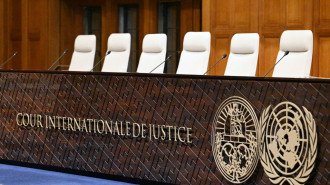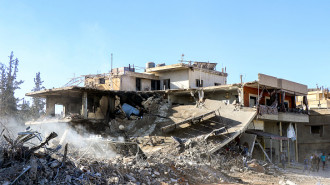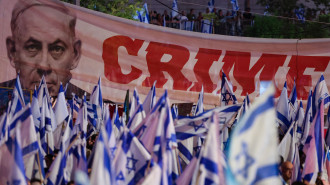US Navy releases video of 'provocative' Iran rocket fire
US Navy releases video of 'provocative' Iran rocket fire
US Navy released black-and-white video on Saturday it said was taken by an American helicopter showing an Iranian Revolutionary Guards vessel firing unguided rockets in December near warships.
3 min read
The Navy said the USS Harry S. Truman aircraft carrier was nearby at time [Getty]
The US Navy released footage on Saturday showing Iranian Revolutionary Guard vessels firing rockets near warships and commercial traffic in the strategic Strait of Hormuz late last month, a move raising tensions between the two nations despite the recent nuclear deal.
The Navy said it released the footage in response to a Freedom of Information Act request, though it also comes as US ally Saudi Arabia has cut ties to the Islamic Republic following attacks on diplomatic posts there after the kingdom's execution of a Shia cleric.
The 45 seconds of black-and-white December 26 footage, which the Navy said was shot from a Seahawk helicopter, shows what appears to be an oil tanker passing by.
A flash appears on the left side of the video and after zooming in, it shows small boats the Navy said were Iranian firing rockets.
The Navy has said the USS Harry S. Truman aircraft carrier, the USS Bulkeley destroyer and a French frigate were nearby at the time, as well as commercial vessels.
There was no immediate reaction in Tehran to the video's release.
Previously, General Ramezan Sharif, a Revolutionary Guard spokesman, said his forces didn't carry out any drills there at that time and called the American comments "psychological warfare."
Military vessels taking part in the war against the Islamic State group in Iraq and Syria also pass through the strait, a narrow waterway between Iran and Oman.
The US Navy previously said Iran gave 23-minutes warning over maritime radio before opening fire with unguided rockets.
The Strait of Hormuz is only about 33 kilometres (21 miles) wide at its narrowest point.
Ships traversing the chokepoint have even less room to manoeuvre.
The US Navy's 5th Fleet is based in nearby Bahrain, on the southern coast of the Gulf.
It conducts anti-piracy patrols in the greater Gulf and serves as a regional counterbalance to Iran.
US and Iranian forces clashed in the Strait of Hormuz in the 1980s, during the Iran-Iraq war.
Iran and world powers led by the US agreed to a landmark nuclear deal earlier this year to limit Tehran's enrichment of uranium in exchange for lifting economic sanctions. Iran has always denied seeking nuclear arms.
The deal reached with moderate President Hassan Rouhani's administration has been panned by Iranian hard-liners, and in the months since, Iran has conducted missile tests criticised by the US, as well as aired footage on state television of an underground missile base.
In recent days, regional tensions have been escalated even higher as Iran and Saudi Arabia face off after the execution of Sheikh Nimr al-Nimr and the storming of the kingdom's diplomatic posts in Iran.
The Navy said it released the footage in response to a Freedom of Information Act request, though it also comes as US ally Saudi Arabia has cut ties to the Islamic Republic following attacks on diplomatic posts there after the kingdom's execution of a Shia cleric.
The 45 seconds of black-and-white December 26 footage, which the Navy said was shot from a Seahawk helicopter, shows what appears to be an oil tanker passing by.
A flash appears on the left side of the video and after zooming in, it shows small boats the Navy said were Iranian firing rockets.
The Navy has said the USS Harry S. Truman aircraft carrier, the USS Bulkeley destroyer and a French frigate were nearby at the time, as well as commercial vessels.
There was no immediate reaction in Tehran to the video's release.
Previously, General Ramezan Sharif, a Revolutionary Guard spokesman, said his forces didn't carry out any drills there at that time and called the American comments "psychological warfare."
Military vessels taking part in the war against the Islamic State group in Iraq and Syria also pass through the strait, a narrow waterway between Iran and Oman.
The US Navy previously said Iran gave 23-minutes warning over maritime radio before opening fire with unguided rockets.
The Strait of Hormuz is only about 33 kilometres (21 miles) wide at its narrowest point.
Ships traversing the chokepoint have even less room to manoeuvre.
The US Navy's 5th Fleet is based in nearby Bahrain, on the southern coast of the Gulf.
It conducts anti-piracy patrols in the greater Gulf and serves as a regional counterbalance to Iran.
US and Iranian forces clashed in the Strait of Hormuz in the 1980s, during the Iran-Iraq war.
Iran and world powers led by the US agreed to a landmark nuclear deal earlier this year to limit Tehran's enrichment of uranium in exchange for lifting economic sanctions. Iran has always denied seeking nuclear arms.
The deal reached with moderate President Hassan Rouhani's administration has been panned by Iranian hard-liners, and in the months since, Iran has conducted missile tests criticised by the US, as well as aired footage on state television of an underground missile base.
In recent days, regional tensions have been escalated even higher as Iran and Saudi Arabia face off after the execution of Sheikh Nimr al-Nimr and the storming of the kingdom's diplomatic posts in Iran.

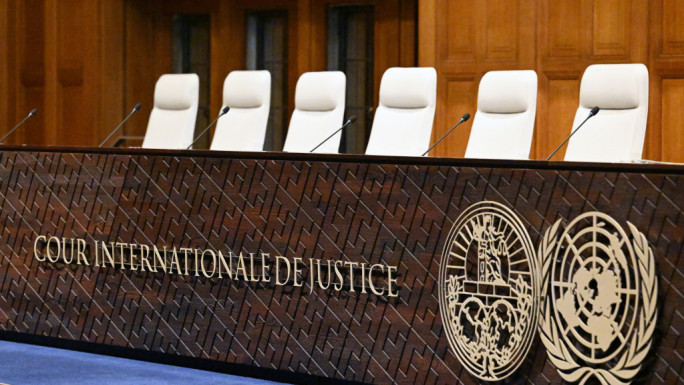
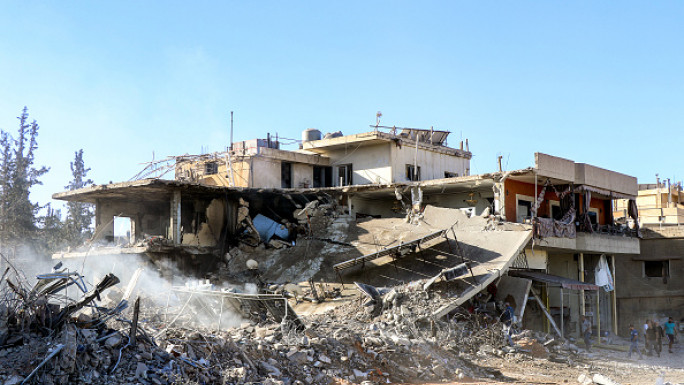
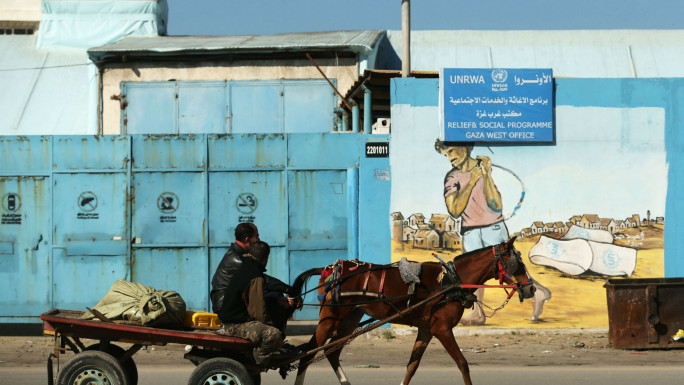

 Follow the Middle East's top stories in English at The New Arab on Google News
Follow the Middle East's top stories in English at The New Arab on Google News
